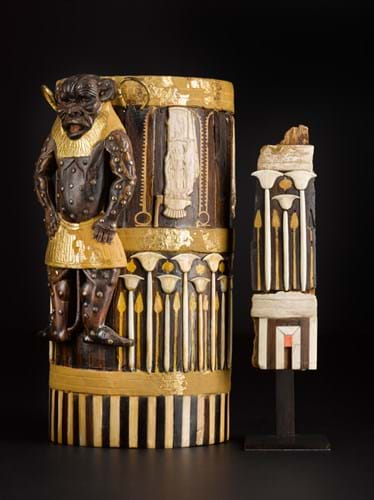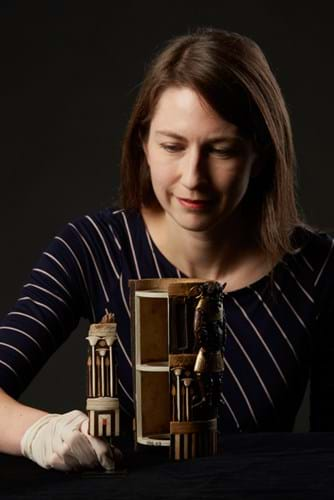
Two fragments of a decorative wooden box made c1400BC, during the reign of King Amenhotep II, were held at the London-based dealer until Egyptologist Tom Hardwick made the connection to a piece in the National Museums Scotland’s collection last April.
George Ludlow, gallery manager of Charles Ede, recalls that after finding out about the link, the gallery immediately contacted the museum. The museum was then able to purchase for £25,000, with support from the Art Fund and the National Museums Scotland Charitable Trust, the two missing fragments for the box which had been in the museum’s collection for 160 years.
The 22cm tall box is made of cedar wood, ebony, ivory, gold, copper alloy and faience. The use of exotic material signifies the wealth of Amenhotep II and the extent of his empire into reaches of the Mediterranean. It is thought to have been used to store cosmetics or perfume in the royal palace.

Margaret Maitland, senior curator of the Ancient Mediterranean at National Museums Scotland, with a box from the reign of Amenhotep II. The museum purchased missing fragments of the box for £25,000, with support from the Art Fund and the National Museums Scotland Charitable Trust. Image courtesy of National Museums Scotland.
“We are delighted to have the opportunity to reunite these fragments with our spectacular box, which is one of the great treasures from our ancient Egyptian collections,” said Margaret Maitland, senior curator of the Ancient Mediterranean at National Museums Scotland. “Palace objects from ancient Egypt are extremely rare, so it’s very exciting for us to be able to confirm this object’s royal connections.”
The box and fragments will go on display in a new exhibition, The Tomb: Ancient Egyptian Burial, which opens at the National Museum of Scotland on March 31.
Ludlow added that the gallery was always keen to work with museums and institutions to improve public collections.





